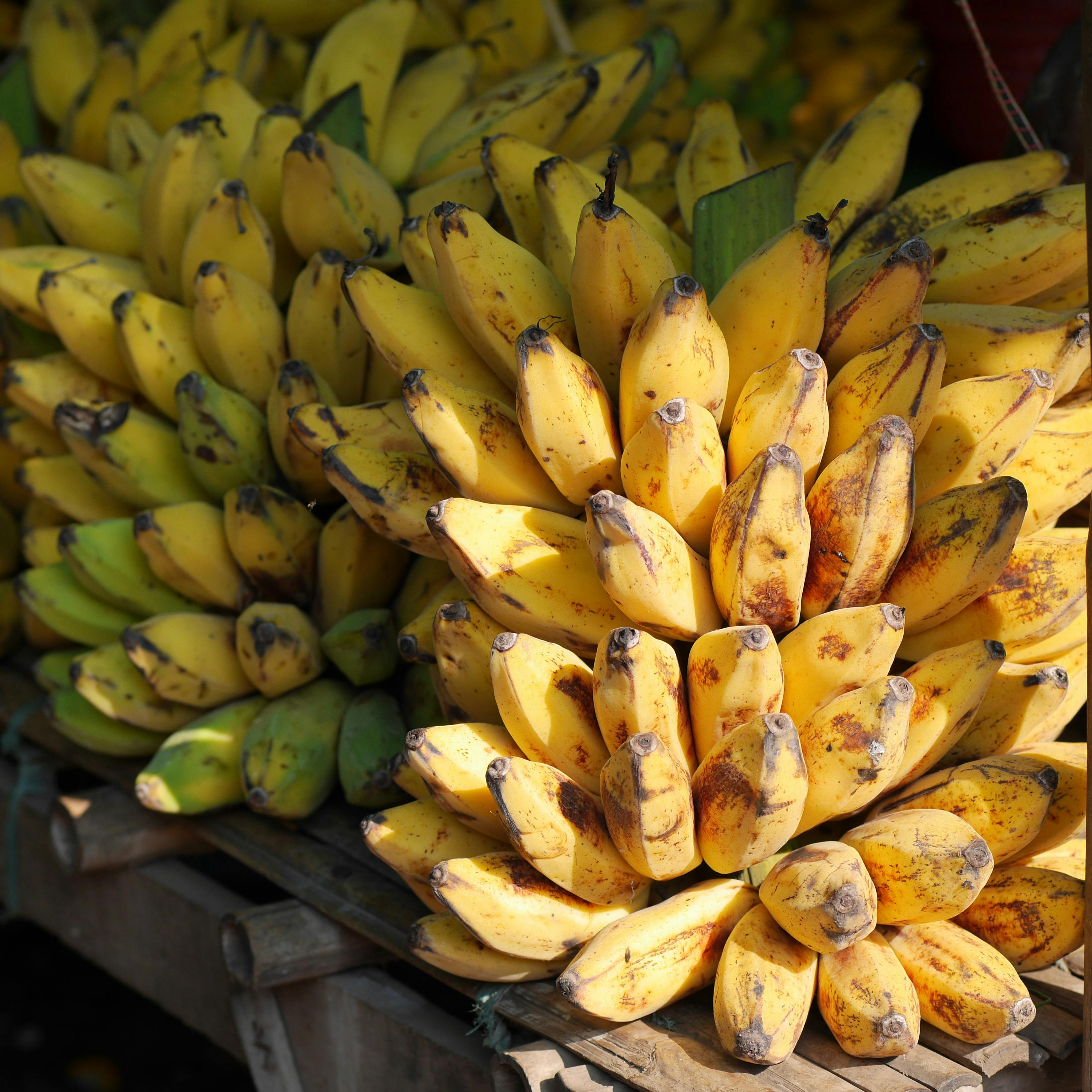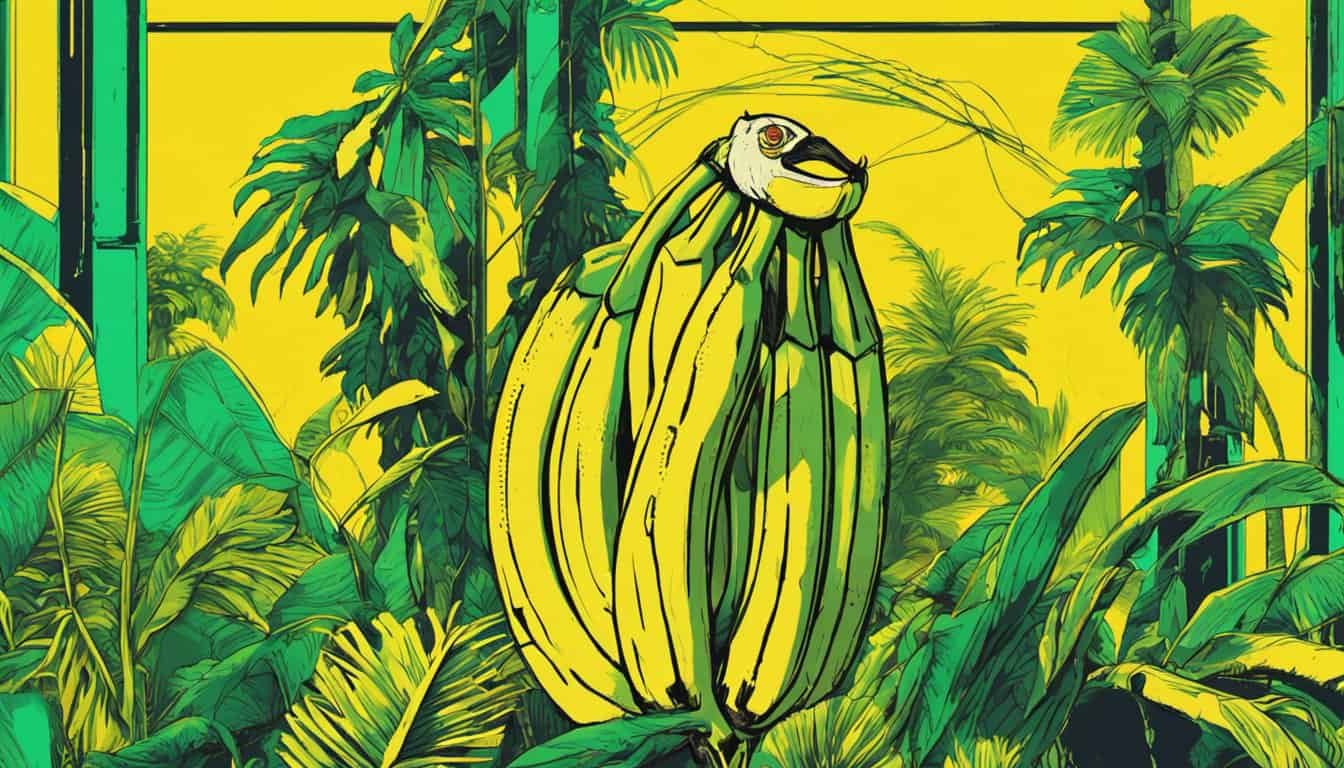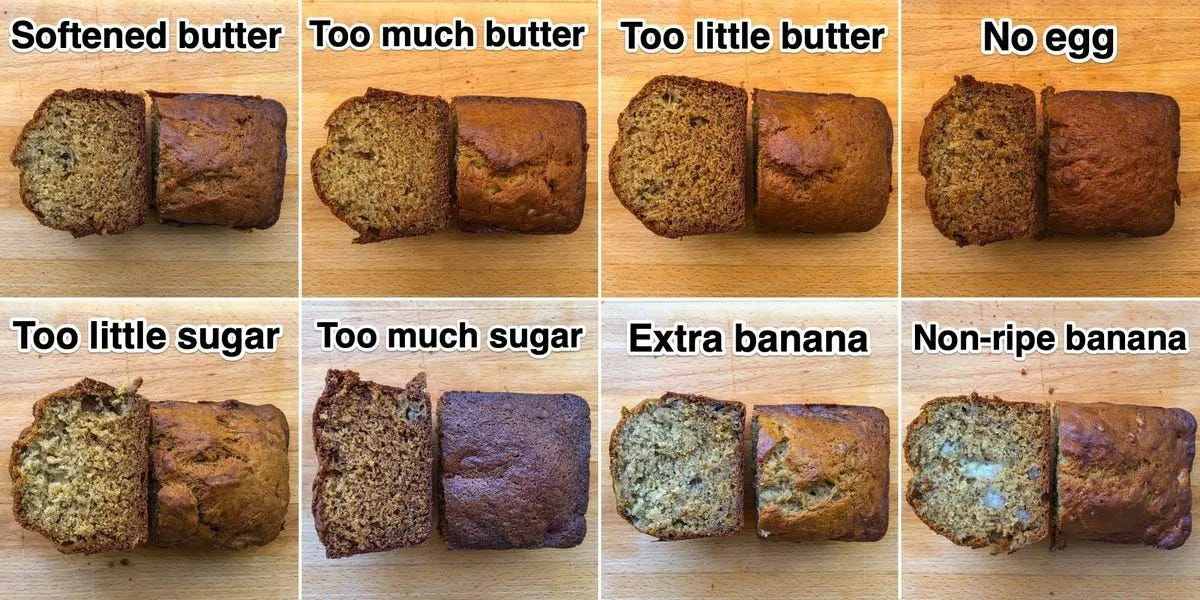Key Takeaways
- High Pesticide Usage: Banana farming relies heavily on fungicides, insecticides, and herbicides to protect crops and maximize yields.
- Health Risks: Pesticide residues on bananas are linked to serious health issues, including neurological disorders, cancer, and endocrine disruption.
- Environmental Impact: Extensive pesticide use leads to soil and water pollution, harming aquatic life and reducing biodiversity.
- Sustainable Alternatives: Organic farming and Integrated Pest Management can effectively reduce reliance on harmful pesticides while maintaining crop health.
- Regulatory Measures: Strict regulations and safety standards by bodies like the EPA and EFSA are essential for mitigating health and environmental risks associated with pesticide use in banana cultivation.

Bananas are a staple in many of our diets, loved for their convenience and sweetness. But have you ever wondered what’s going into growing these beloved fruits?
As I dug into the world of banana farming, I discovered that pesticide use is more widespread than I imagined. This not only raises questions about our health but also the impact on the environment. Let’s explore the hidden side of banana cultivation and what it means for us and our planet.
Overview of Pesticide Use in Banana Cultivation
Banana cultivation relies extensively on pesticides to protect crops from pests and diseases. Farmers apply fungicides, insecticides, and herbicides to ensure healthy banana growth. For example, fungicides like mancozeb prevent fungal infections, while insecticides such as imidacloprid control banana weevils.
Common Pesticides in Banana Farming
| Pesticide Type | Common Chemicals | Purpose |
|---|---|---|
| Fungicides | Mancozeb, Thiram | Prevent fungal diseases |
| Insecticides | Imidacloprid, Malathion | Control insect pests |
| Herbicides | Glyphosate, 2,4-D | Manage weed growth |
Frequency and Quantity of Use

Banana farms typically apply pesticides multiple times per growing season. According to the Food and Agriculture Organization (FAO), banana plantations use approximately 5 kilograms of pesticides per hectare annually. This high level of pesticide application aims to maximize yield and reduce crop losses.
Health and Environmental Impacts
Pesticide residues on bananas can pose health risks to consumers, including potential links to neurological disorders and cancers. Environmentally, pesticide runoff contaminates water sources, harming aquatic life and reducing biodiversity. Additionally, excessive pesticide use can lead to the development of resistant pest strains, necessitating even more chemical interventions.
By understanding the scope of pesticide use in banana cultivation, we can better assess its implications for health and the environment.
Common Pesticides Used in Bananas
Banana farms use various pesticides to safeguard crops from pests and diseases. Here are the primary types and how they’re applied.
Types of Chemicals
- Fungicides: Mancozeb, propiconazole, and thiabendazole prevent fungal infections like Black Sigatoka and Fusarium wilt.
- Insecticides: Imidacloprid, chlorpyrifos, and thiamethoxam control banana weevils, aphids, and mites.
- Herbicides: Glyphosate, paraquat, and atrazine manage weed growth that competes with banana plants.
Application Methods
- Spraying: Utilizing both ground and aerial spraying techniques for large plantations.
- Drift Application: Applying pesticides near plant bases to target specific pests while minimizing chemical use.
- Soil Drenching: Mixing pesticides with water and applying directly to the soil to protect root systems.
| Pesticide Type | Common Chemicals | Target Pests/Diseases |
|---|---|---|
| Fungicides | Mancozeb, Propiconazole | Black Sigatoka, Fusarium |
| Insecticides | Imidacloprid, Chlorpyrifos | Banana Weevils, Aphids |
| Herbicides | Glyphosate, Atrazine | Weeds |
Health Impacts on Consumers
Pesticide residues on bananas can affect consumer health in various ways. Understanding these impacts is essential for making informed dietary choices.
Short-Term Health Effects
Exposure to pesticide residues may cause immediate symptoms, including:
- Nausea and Vomiting: Ingesting high levels of certain pesticides leads to gastrointestinal distress.
- Headaches and Dizziness: Acute exposure can result in neurological symptoms like headaches and dizziness.
- Skin Irritation: Handling bananas with pesticide residues may cause allergic reactions or skin irritation.
- Respiratory Issues: Inhalation of pesticide particles during washing can trigger breathing difficulties.
Long-Term Health Risks
- Neurological Disorders: Prolonged pesticide exposure is linked to conditions like Parkinson’s disease and impaired cognitive function.
- Cancer: Certain pesticides are classified as carcinogens, increasing the risk of cancers such as leukemia and lymphoma.
- Endocrine Disruption: Pesticides can interfere with hormonal balance, affecting growth, metabolism, and reproductive health.
- Reproductive Health Issues: Long-term exposure may lead to reduced fertility and developmental problems in offspring.
| Health Impact | Associated Pesticides | Potential Outcomes |
|---|---|---|
| Neurological Disorders | Imidacloprid, Chlorpyrifos | Parkinson’s disease, cognitive decline |
| Cancer | Mancozeb, Glyphosate | Leukemia, lymphoma |
| Endocrine Disruption | Thiamethoxam, Paraquat | Hormonal imbalance, metabolic issues |
| Reproductive Health Issues | Chlorpyrifos, Atrazine | Reduced fertility, developmental delays |
Environmental Consequences
Pesticide use in banana farming extends beyond health risks, significantly impacting our environment. Understanding these effects is crucial for sustainable banana cultivation.
Soil and Water Pollution
Pesticides applied to banana plantations often infiltrate the soil and nearby water sources. Runoff from heavy rains carries chemicals like glyphosate and chlorpyrifos into rivers and streams, contaminating aquatic ecosystems. Soil health deteriorates as pesticides disrupt beneficial microorganisms, reducing soil fertility and structure. Persistent chemicals accumulate over time, leading to long-term environmental degradation. For example, studies show that pesticide residues can remain in soil for years, affecting crop rotation and future agricultural productivity.
Impact on Biodiversity
Pesticide application in banana farming poses a threat to local biodiversity. Non-target species, including insects, birds, and aquatic life, suffer from exposure to harmful chemicals. Pollinators like bees experience population declines due to insecticide use, disrupting plant reproduction cycles. Aquatic habitats become less hospitable for fish and amphibians as pesticide runoff alters water quality. Additionally, the reduction in insect populations affects food chains, leading to broader ecological imbalances. Preserving biodiversity requires minimizing pesticide use and adopting integrated pest management practices.
Sustainable Alternatives
Transitioning to sustainable practices reduces pesticide reliance while ensuring banana crop health and environmental protection.
Organic Farming Practices

Organic farming avoids synthetic pesticides by using natural alternatives. I use biological controls like beneficial insects to manage pests. I enrich the soil through composting, which boosts plant resilience. I rotate crops to prevent pest buildup and keep the soil fertile. For example, introducing ladybugs controls aphid populations naturally.
Integrated Pest Management
Integrated Pest Management (IPM) combines multiple strategies for effective pest control. I monitor pest levels regularly to inform decisions. I employ biological controls, such as predatory insects, to reduce pest populations without chemicals. I utilize mechanical methods like traps to minimize pest entry. If pest thresholds are exceeded, I apply targeted, minimal pesticide use to protect the crop and environment.
Regulatory Measures and Safety Standards
Regulatory frameworks govern pesticide use in banana farming to safeguard health and the environment. Governments establish Maximum Residue Limits (MRLs) for pesticides on bananas, ensuring consumer safety. For example, the United States Environmental Protection Agency (EPA) sets specific MRLs for each pesticide, regularly reviewing them based on scientific data.
Internationally, the European Union (EU) enforces strict pesticide regulations through the European Food Safety Authority (EFSA). The EU bans certain hazardous pesticides, such as chlorpyrifos, due to their adverse health effects. Compliance with these regulations is mandatory for banana exporters aiming to access these markets.
Certification programs promote sustainable practices in banana cultivation. The Rainforest Alliance certification requires adherence to integrated pest management (IPM) practices, reducing reliance on synthetic pesticides. Similarly, Fair Trade standards emphasize environmental responsibility and worker safety, limiting pesticide use to approved substances.
Monitoring and enforcement ensure adherence to safety standards. Regular inspections and residue testing detect non-compliance, imposing penalties on violators. Importing countries also conduct their own tests to verify that exported bananas meet their safety criteria.

Key Regulatory Bodies and Standards
- United States Environmental Protection Agency (EPA): Sets MRLs and reviews pesticide safety.
- European Food Safety Authority (EFSA): Evaluates and approves pesticides for EU markets.
- Rainforest Alliance: Certifies farms adhering to sustainable and reduced pesticide practices.
- Fair Trade International: Ensures fair labor practices and environmental stewardship in banana production.
Commonly Regulated Pesticides
| Pesticide | Regulating Body | Maximum Residue Limit (ppm) |
|---|---|---|
| Mancozeb | EPA | 0.3 |
| Imidacloprid | EFSA | 0.05 |
| Glyphosate | EPA | 0.1 |
| Chlorpyrifos | EFSA | Banned |
« Water Usage in Banana Farms: Conservation Efforts Transforming Sustainability
Fair Trade Bananas: Ensuring Worker Rights – 5 Ways Your Choice Makes a Difference »
Compliance with these regulations helps mitigate health risks and environmental impact, promoting safer banana production and consumption.
Conclusion
Bananas have always been a favorite of mine, and understanding the pesticide issues behind their cultivation has made me more thoughtful about my choices. I believe it’s possible to enjoy this delicious fruit while also caring for our health and the environment. Supporting sustainable farming practices like organic farming and integrated pest management feels like a positive step forward. I’m committed to seeking out bananas that are grown responsibly and encouraging others to do the same. Together we can make a difference by choosing products that protect our planet and ensure safer foods for everyone. It’s rewarding to know that our everyday choices can contribute to a healthier world. Let’s continue to stay informed and take actions that support both our well-being and the environment we cherish.
Frequently Asked Questions
Why are bananas considered a dietary staple?
Bananas are favored as a dietary staple due to their natural sweetness, convenience, and nutritional value. They are easy to transport and store, making them accessible year-round. Rich in essential vitamins and minerals like potassium, vitamin C, and dietary fiber, bananas provide a quick energy boost. Their versatility allows them to be consumed fresh, blended into smoothies, or used in various recipes, appealing to a wide range of tastes and preferences.
What pesticides are commonly used in banana farming?
Banana farming relies heavily on pesticides to protect crops from pests and diseases. Common fungicides include mancozeb, propiconazole, and thiabendazole, which combat fungal infections like Black Sigatoka. Insecticides such as imidacloprid, chlorpyrifos, and thiamethoxam target pests like banana weevils and aphids. Herbicides like glyphosate, paraquat, and atrazine are used to manage weeds. These chemicals are applied multiple times per growing season to ensure high yields and prevent crop losses.
How do pesticides in banana farming affect consumer health?
Pesticide residues on bananas can pose health risks to consumers. Short-term exposure may cause symptoms like nausea, headaches, skin irritation, and respiratory issues. Long-term exposure is linked to more severe health problems, including neurological disorders such as Parkinson’s disease, various cancers, endocrine disruption, and reproductive health issues. These risks highlight the importance of monitoring pesticide levels and adopting safer farming practices to protect consumer health.
What are the environmental impacts of pesticide use in banana farming?
Pesticides used in banana farming have significant environmental consequences. Runoff from heavy rains can carry harmful chemicals into rivers and streams, contaminating water sources and harming aquatic life. Pesticides also degrade soil health and reduce biodiversity by affecting non-target species like pollinators and aquatic organisms. This disruption of ecological balance underscores the need for sustainable farming practices to minimize environmental damage and preserve ecosystem integrity.
What sustainable alternatives exist for banana farming?
Sustainable alternatives to conventional banana farming include organic farming and Integrated Pest Management (IPM). Organic farming avoids synthetic pesticides, using natural methods like beneficial insects for pest control and composting to enhance soil health. IPM combines monitoring pest levels, using biological controls, and implementing mechanical methods to manage pests effectively while reducing chemical use. These practices aim to maintain crop health and yield while minimizing environmental impact and promoting sustainability.
How is pesticide use regulated in banana farming?
Pesticide use in banana farming is regulated through Maximum Residue Limits (MRLs) set by authorities like the U.S. Environmental Protection Agency (EPA) and the European Food Safety Authority (EFSA). These regulations ensure that pesticide levels on bananas are safe for consumers. Additionally, certification programs such as Rainforest Alliance and Fair Trade promote sustainable farming practices by requiring adherence to integrated pest management and limiting pesticide use. Regular monitoring and enforcement of these standards help mitigate health risks and environmental impacts.
What are the benefits of sustainable farming practices in banana cultivation?
Sustainable farming practices in banana cultivation offer numerous benefits, including reduced reliance on harmful pesticides, improved soil health, and enhanced biodiversity. Organic farming methods promote the use of natural pest control and soil enrichment techniques, leading to healthier crops and ecosystems. Integrated Pest Management minimizes chemical use while effectively managing pests, ensuring long-term agricultural productivity. These practices not only protect consumer health and the environment but also support the sustainability and resilience of banana farming communities.
How can consumers make safer choices regarding bananas?

Consumers can make safer choices by opting for bananas certified by organizations like Rainforest Alliance or Fair Trade, which ensure adherence to sustainable and safer farming practices. Washing bananas thoroughly can help reduce pesticide residues. Additionally, supporting organic bananas can minimize exposure to synthetic pesticides. Being informed about the sources and farming methods of bananas can empower consumers to choose products that are better for their health and the environment.
















